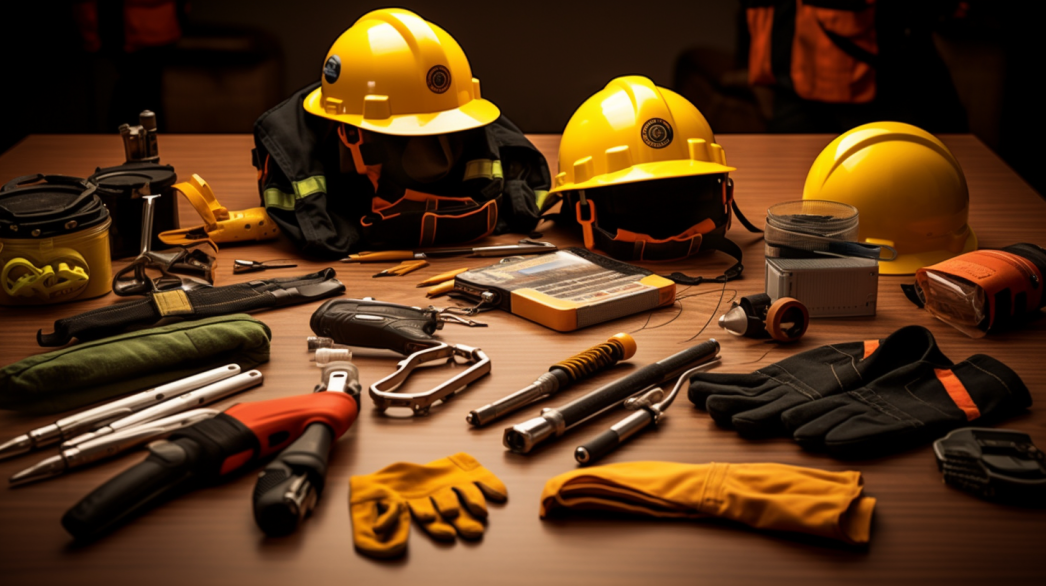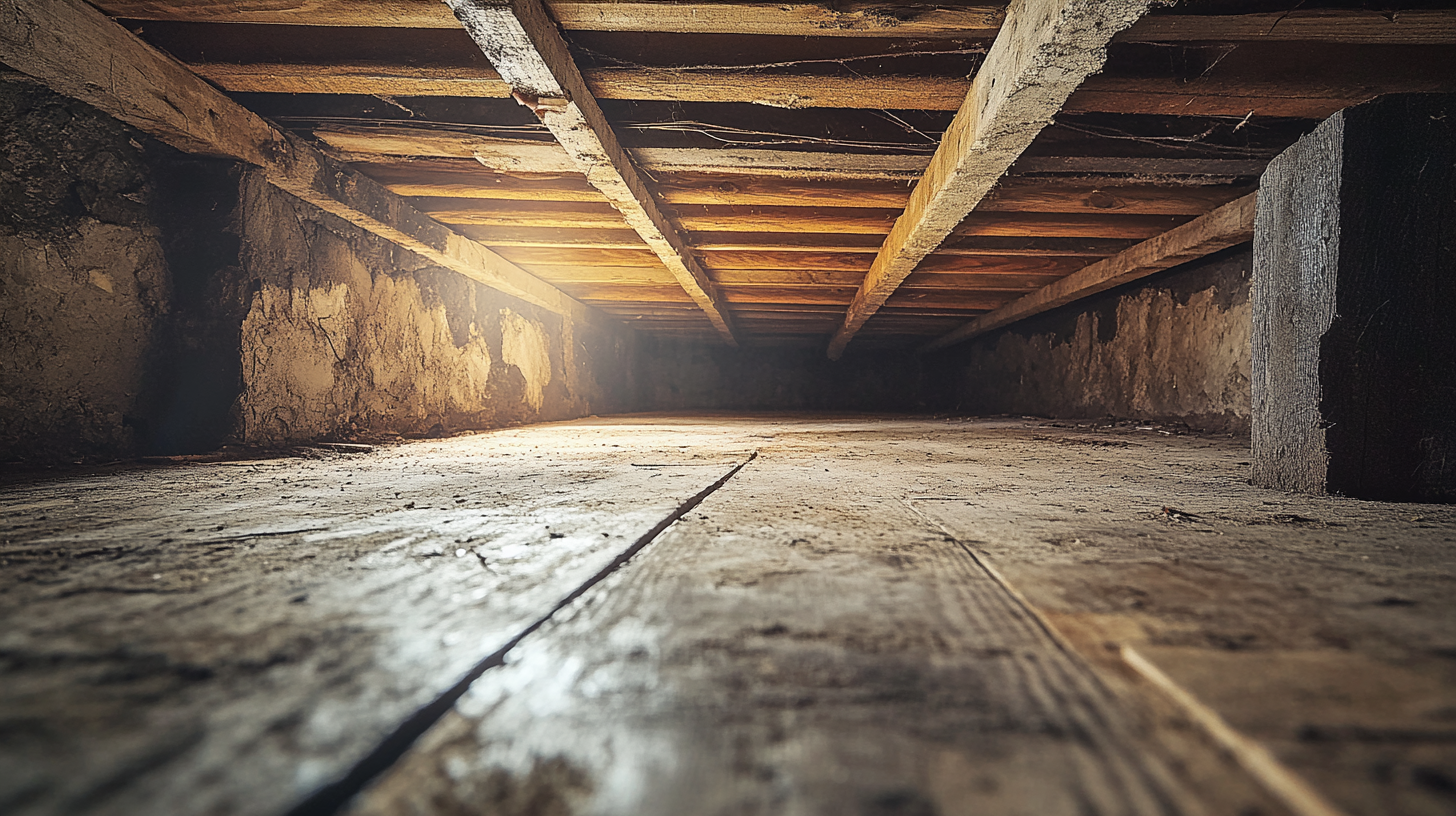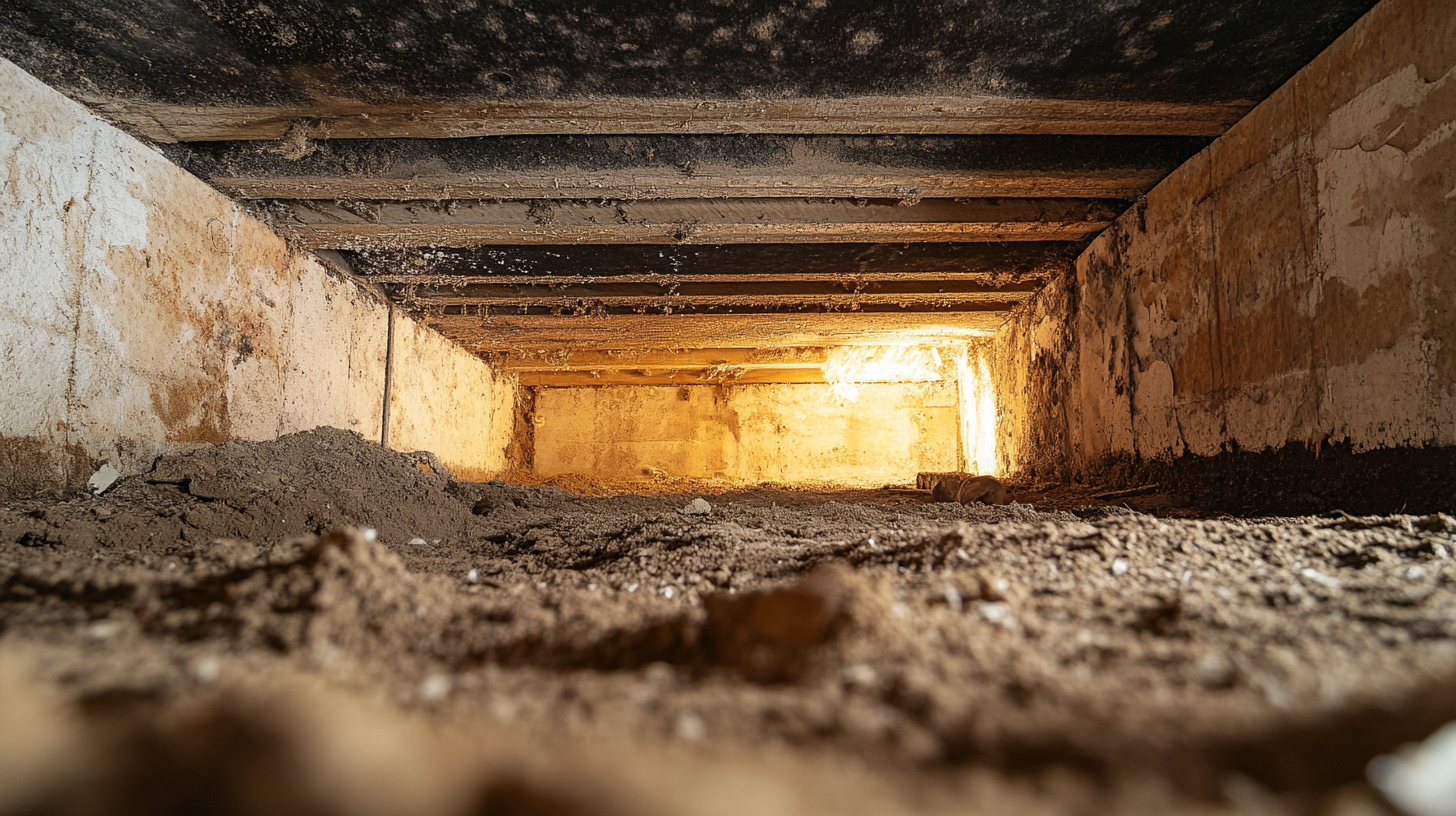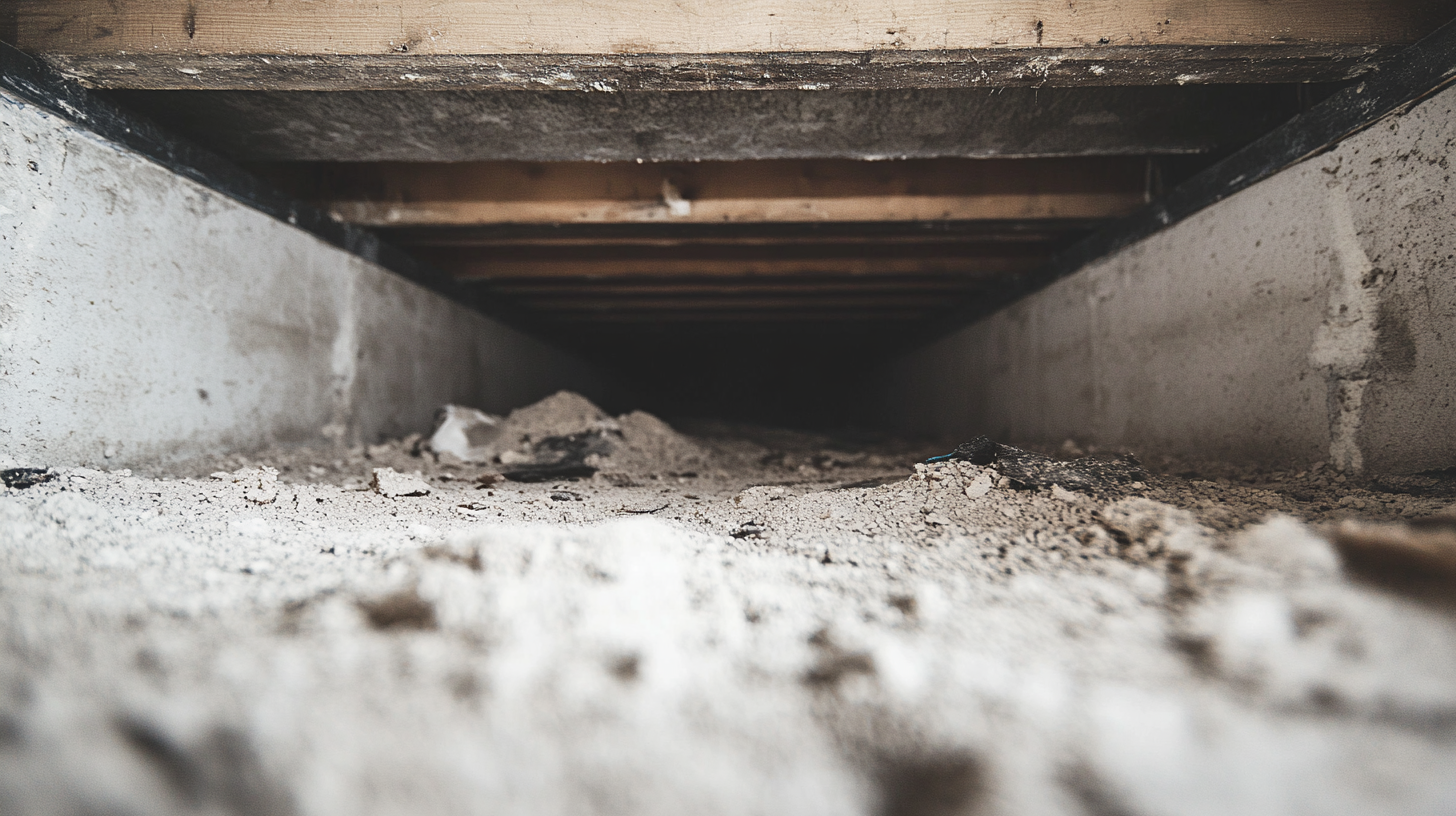Confined Space Safety Protocols in Restoration Projects

Restoration projects, whether they involve historical buildings or industrial sites, often present unique challenges. Among these, working in confined spaces is one of the most perilous tasks workers can encounter. Confined spaces—areas not designed for continuous human occupancy, such as tunnels, tanks, or basements—are notorious for their restricted entry and exit points, limited ventilation, and the potential for hazardous atmospheres.
The importance of safety in these environments cannot be overstated. Ensuring that workers are adequately protected involves not just adherence to regulatory standards but also a deep understanding of the risks involved and the implementation of comprehensive safety protocols. This blog explores why safety in confined spaces is crucial during restoration projects, highlighting the key risks, regulatory requirements, and best practices that must be followed to safeguard the health and well-being of workers in these challenging environments.
Initial Assessment and Hazard Identification
The foundation of any successful restoration project in confined spaces begins with a meticulous initial assessment and hazard identification process. This crucial phase is where potential dangers are identified, evaluated, and prioritized, ensuring that the necessary precautions are in place before any work commences.
Site Inspection
The first step in this process is a comprehensive site inspection. This involves a detailed examination of the project area to identify all confined spaces—those areas not designed for continuous occupancy but essential for restoration tasks. These spaces may include underground vaults, storage tanks, silos, or crawl spaces, each presenting unique challenges.
During the site inspection, it's vital to assess the potential hazards that could be present within these confined spaces. Key hazards to identify include:
- Low Oxygen Levels: Many confined spaces have poor ventilation, leading to oxygen depletion, which can pose significant risks to workers' health and safety.
- Toxic Gases: The presence of harmful gases, such as carbon monoxide, hydrogen sulfide, or methane, is a common threat in confined spaces. These gases can accumulate quickly, creating life-threatening conditions.
- Structural Instability: Confined spaces, particularly in older or deteriorated structures, may suffer from compromised structural integrity. This can lead to collapses or other physical hazards that endanger workers.
Thoroughly inspecting and identifying these risks is essential to developing an effective safety plan.
Risk Assessment
Once the site inspection is complete, the next step is to conduct a detailed risk assessment. This involves evaluating both the severity and likelihood of the hazards identified during the site inspection.
The risk assessment process should include:
- Severity Evaluation: Assessing the potential impact of each identified hazard on the safety and health of the workers. For example, low oxygen levels or the presence of toxic gases can be immediately life-threatening, requiring urgent attention.
- Likelihood Determination: Estimating the probability of these hazards occurring under normal working conditions. Understanding how often these risks might present themselves helps in prioritizing them effectively.
- Prioritization of Hazards: Based on the severity and likelihood assessments, hazards should be prioritized. The most critical risks, those with high potential impact on safety and health, should be addressed first. This prioritization ensures that resources and efforts are focused on mitigating the most significant dangers.
By systematically identifying and assessing hazards, you create a solid foundation for a safer, more controlled work environment, crucial for the success of any restoration project in confined spaces.
Personal Protective Equipment (PPE)
Personal Protective Equipment (PPE) is the frontline defense for workers in confined spaces during restoration projects. Ensuring that workers are equipped with the right PPE not only mitigates the risks posed by hazardous environments but also enhances the overall safety and efficiency of the project. In confined spaces where the threats of toxic gases, low oxygen levels, and physical hazards are prevalent, the selection, usage, and maintenance of PPE are of paramount importance.
Essential PPE
The selection of PPE should be guided by a thorough understanding of the specific hazards present in the confined space. The following PPE items are essential for ensuring the safety of workers:
- Respiratory Protection: In environments where toxic gases or low oxygen levels are a concern, appropriate respirators are crucial. These may include air-purifying respirators (APRs) for filtering out specific contaminants or supplied-air respirators (SARs) for providing clean air from an uncontaminated source. The choice of respirator should be based on the type and concentration of hazardous substances identified during the risk assessment.
- Protective Clothing: Workers should be outfitted in durable protective clothing, such as coveralls, gloves, and safety boots. These garments are designed to shield the skin from hazardous substances, sharp objects, and other physical dangers. In confined spaces, where movement may be restricted, clothing should be both protective and flexible to allow for ease of movement.
- Head Protection: Confined spaces often present the risk of falling debris or head injuries due to low ceilings and narrow passages. Hard hats are essential to protect against these risks, ensuring that workers are safeguarded from head injuries that could result from accidental impacts or falling objects.
Usage and Maintenance
The effectiveness of PPE depends not only on its quality and suitability but also on its correct usage and maintenance. To maximize the protective benefits of PPE, several key practices must be observed:
- Proper Fitting: PPE must be correctly fitted to each worker to ensure maximum protection. Ill-fitting equipment can compromise safety, leading to exposure to hazardous substances or physical injury. Regular checks should be conducted to ensure that PPE fits well and is comfortable for extended wear.
- Regular Inspection: PPE should undergo routine inspections to identify any wear and tear, damage, or other issues that could reduce its effectiveness. This includes checking respirator filters, ensuring that protective clothing is intact, and verifying that hard hats and other equipment are free from cracks or damage.
- Training on Usage: Workers must be thoroughly trained in the correct use of PPE. This training should cover donning (putting on) and doffing (taking off) procedures to avoid contamination, as well as the proper care and storage of equipment. Training sessions should be conducted regularly and updated as needed to reflect any changes in equipment or safety protocols.
By emphasizing the importance of selecting the right PPE and ensuring its proper use and maintenance, restoration projects in confined spaces can be carried out safely and efficiently. The well-being of workers depends on these critical safety measures, making them an indispensable part of any confined space safety plan.
Entry and Exit Procedures
When working in confined spaces during restoration projects, the procedures for entry and exit are critical to maintaining safety. These spaces often present unique challenges and hazards that require careful planning and strict adherence to safety protocols. Proper entry and exit procedures ensure that all workers are accounted for and protected from potential dangers within these environments.
Permit-Required Confined Spaces
One of the most important safety measures for confined spaces is the implementation of a permit system. Permit-required confined spaces are those that pose significant hazards, such as toxic atmospheres, engulfment risks, or structural instability. A permit system is essential to control and monitor access to these spaces, ensuring that only authorized personnel enter.
- Implementing a Permit System: Before any work begins, a confined space permit must be issued. This permit serves as a formal document that authorizes entry and outlines the specific conditions under which the work is to be performed. It should include details such as the scope of work, identified hazards, and the safety measures that must be in place.
- Detailing Work, Hazards, and Safety Measures: The permit must comprehensively describe the work to be carried out within the confined space. It should identify all known hazards, such as low oxygen levels, toxic gases, or physical risks, and outline the safety measures required to mitigate these hazards. This could include the use of specific personal protective equipment (PPE), the presence of emergency rescue teams, and the implementation of continuous atmospheric monitoring.
The permit system acts as a safeguard, ensuring that every aspect of the work is carefully considered and that appropriate precautions are in place before any entry is made.
Safe Entry Techniques
In addition to the permit system, safe entry techniques are vital for the protection of workers in confined spaces. These techniques involve tracking personnel, maintaining clear communication, and ensuring that emergency procedures are well-established and understood by all involved.
- Using a Confined Space Entry Log: A confined space entry log should be used to track the entry and exit of all personnel. This log records the names of workers entering the space, the time of entry and exit, and any pertinent observations. By maintaining an accurate entry log, supervisors can ensure that all workers are accounted for and that no one is inadvertently left behind in a hazardous environment.
- Establishing Clear Communication Protocols: Effective communication is crucial when workers are inside confined spaces. Communication protocols should be established to ensure that workers can easily communicate with those outside the space, whether through radios, intercoms, or other means. These protocols should include check-ins at regular intervals, emergency signals, and procedures for reporting hazards or incidents. Clear communication helps coordinate activities and ensures that any issues can be addressed promptly.
By adhering to these entry and exit procedures, the risks associated with working in confined spaces can be significantly reduced. The combination of a rigorous permit system and well-defined entry techniques ensures that workers are protected from the unique dangers of confined spaces, enabling them to complete their tasks safely and efficiently.
Monitoring and Ventilation
Effective monitoring and ventilation are fundamental to ensuring the safety of workers in confined spaces during restoration projects. These environments are often characterized by poor air quality and limited natural ventilation, which can lead to dangerous conditions. Proper air quality monitoring and the implementation of ventilation systems are critical steps in mitigating these risks and creating a safe working environment.
Air Quality Monitoring
Maintaining safe air quality in confined spaces is a primary concern, as these environments can quickly become hazardous due to the accumulation of toxic gases or the depletion of oxygen. Regular air quality monitoring is essential to detect these dangers before they pose a threat to workers.
- Regular Testing for Oxygen Levels, Toxic Gases, and Contaminants: Before entering a confined space, the air should be thoroughly tested to determine oxygen levels and check for the presence of toxic gases and other harmful contaminants. Oxygen levels below 19.5% are considered unsafe, and the presence of gases such as carbon monoxide, hydrogen sulfide, or volatile organic compounds can pose significant risks. Regular testing ensures that any dangerous changes in air quality are detected promptly, allowing for immediate corrective action.
- Continuous Air Monitoring Devices: In situations where air quality may fluctuate or where there is a constant threat of contamination, continuous air monitoring devices should be used. These devices provide real-time data on the air composition within the confined space, alerting workers and supervisors to any sudden changes. Continuous monitoring is particularly crucial in spaces where the air quality could deteriorate rapidly, such as areas with potential leaks or where volatile substances are present.
By prioritizing regular and continuous air quality monitoring, the risk of exposure to hazardous environments is greatly reduced, ensuring that workers remain safe throughout the duration of the project.
Ventilation Systems
Even with vigilant air quality monitoring, effective ventilation is necessary to maintain safe air conditions in confined spaces. Proper ventilation systems are essential for ensuring adequate airflow, removing toxic gases, and supplying fresh air to workers.
- Installing Ventilation Systems for Adequate Airflow: Ventilation systems should be installed to circulate air within confined spaces, preventing the buildup of harmful gases and ensuring a steady supply of fresh air. These systems are especially important in spaces with poor natural ventilation or where toxic substances are present. By facilitating airflow, these systems help maintain a safe and breathable environment.
- Using Exhaust Fans to Remove Toxic Gases: Exhaust fans are a key component of ventilation systems, designed to actively remove toxic gases and contaminants from the confined space. These fans work by drawing out the polluted air and replacing it with clean, fresh air from outside the space. This process is crucial for preventing the accumulation of hazardous substances and ensuring that workers have access to safe air throughout their time in the confined space.
Proper ventilation, combined with diligent air quality monitoring, creates a safe working environment in confined spaces, protecting workers from the inherent dangers of these challenging conditions. By implementing these measures, restoration projects can be carried out efficiently and safely, minimizing the risk of exposure to harmful contaminants.
Emergency Preparedness
In any restoration project involving confined spaces, emergency preparedness is a critical component of the overall safety strategy. Confined spaces are inherently dangerous, and even with the best precautions, emergencies can still occur. Therefore, having a well-developed emergency preparedness plan is essential to protect the lives of workers and ensure a swift, coordinated response in the event of an incident.
Emergency Response Plan
A comprehensive emergency response plan is the cornerstone of preparedness for confined space work. This plan should be tailored to the specific risks associated with the confined spaces on the project site and must be thorough in its approach to managing potential emergencies.
- Developing a Comprehensive Plan for Confined Space Emergencies: The emergency response plan should address all conceivable emergency scenarios that could arise in a confined space, including medical emergencies, exposure to toxic gases, fires, and structural collapses. The plan should outline the steps to be taken immediately when an emergency occurs, including evacuation procedures, communication protocols, and the roles and responsibilities of each team member. A well-structured plan ensures that every worker knows what to do in an emergency, reducing panic and confusion.
- Including Contact Information for Emergency Services and Internal Response Teams: The plan must include up-to-date contact information for local emergency services, such as fire departments, medical services, and hazardous materials teams. Additionally, the plan should detail the internal response teams' contact information, including supervisors, safety officers, and trained rescue personnel. Having this information readily available ensures that help can be quickly summoned and that all necessary parties are notified promptly.
Rescue Procedures
Rescue procedures are a critical aspect of emergency preparedness in confined spaces. In the event of an emergency, a prompt and efficient rescue operation can mean the difference between life and death. Therefore, it is essential to have a trained rescue team and clear procedures in place.
- Training a Designated Rescue Team Equipped with Proper Tools and PPE: A designated rescue team should be specially trained in confined space rescue operations. This team must be familiar with the specific risks associated with the confined spaces on the project site and be equipped with the necessary tools and personal protective equipment (PPE) to perform rescues safely. The rescue team should undergo regular training exercises to maintain their readiness and ensure they are prepared to respond to a variety of emergency scenarios.
- Establishing Clear Procedures for Safe and Efficient Rescue Operations: Clear, detailed procedures must be established for rescue operations. These procedures should cover the entire rescue process, from initial assessment and entry into the confined space to the safe extraction and medical treatment of the affected worker(s). The procedures should also include guidelines for maintaining communication with both the rescue team and the workers inside the confined space, ensuring that everyone is kept informed throughout the operation. By having well-defined rescue procedures, the risk of injury to both the victim and the rescuers is minimized, and the chances of a successful outcome are greatly increased.
Emergency preparedness in confined spaces is not just about reacting to emergencies—it’s about being ready for them before they happen. By developing a robust emergency response plan and training a skilled rescue team, you create a safer work environment where the risks associated with confined spaces are managed effectively and the well-being of workers is prioritized.
FAQs
Contact Fast Response Cleaning & Restoration Today!
Fast Response Cleaning & Restoration will do everything we can to ensure your experience with us is excellent.
Request A FREE Estimate
Request A FREE Estimate Form
CHECKOUT RECENT POST



Have an Emergency? We're Here to Help!
When it comes to disaster cleanup, we are a seasoned veteran in the industry and have helped hundreds of property owners just like you.
Our disaster recovery teams are available 24-7 to quickly clean up and repair disasters of all types.
